Incandescent lamps are almost a thing of the past, giving way to more high-tech and energy-efficient LEDs. Now they are used everywhere: in home, street, industrial lighting, in the automotive industry. But, like any equipment, such elements can burn out. What to do if one of them fails in the circuit? Do not change the entire chain! In fact, this is not required. It will be about checking LEDs with a multimeter, how to carry it out and determining the anode and cathode using a tester.
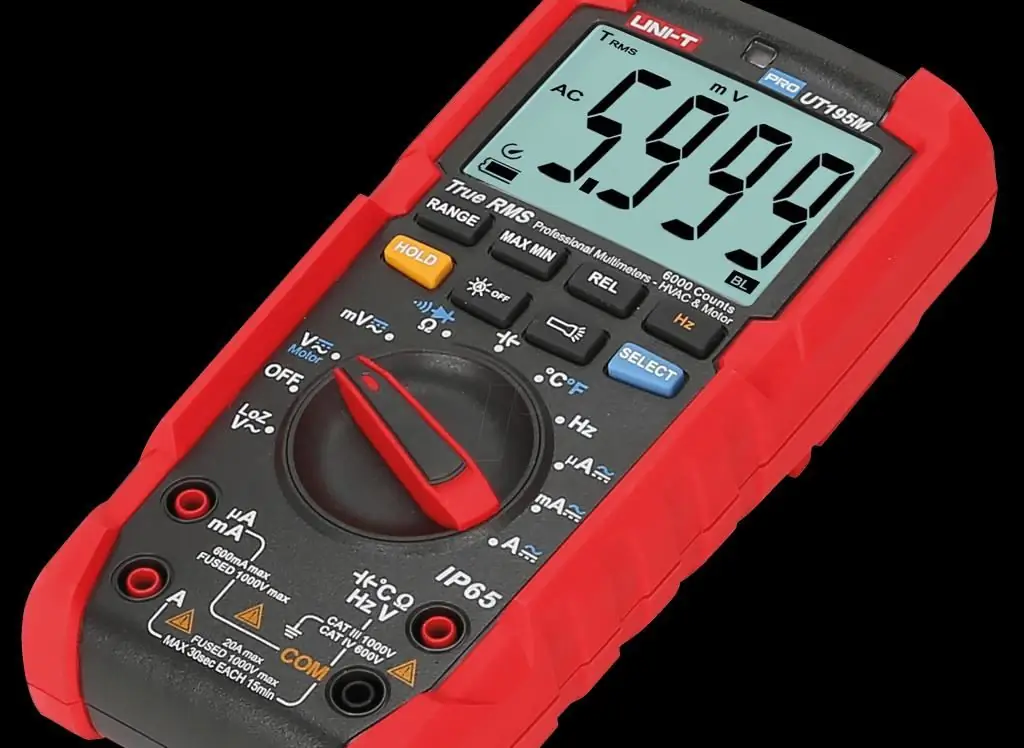
Types of multimeters and their features
Such testers can be divided into 2 types: digital and analog. The latter appeared much earlier and have a lower cost, but their error is much higher. Externally, an analog device can be easily distinguished from a digital one by the presence of a scale with an arrow. To test the LEDs with a tester, the error value does not matter, but if high-precision measurements are required,it is better to arm yourself with a more expensive device equipped with a liquid crystal display.
Working with such devices is quite simple. Having connected the wires with probes to the corresponding sockets, it is necessary to set the measured parameter using the switch on the front panel. Some models require separate activation with a button or toggle switch.
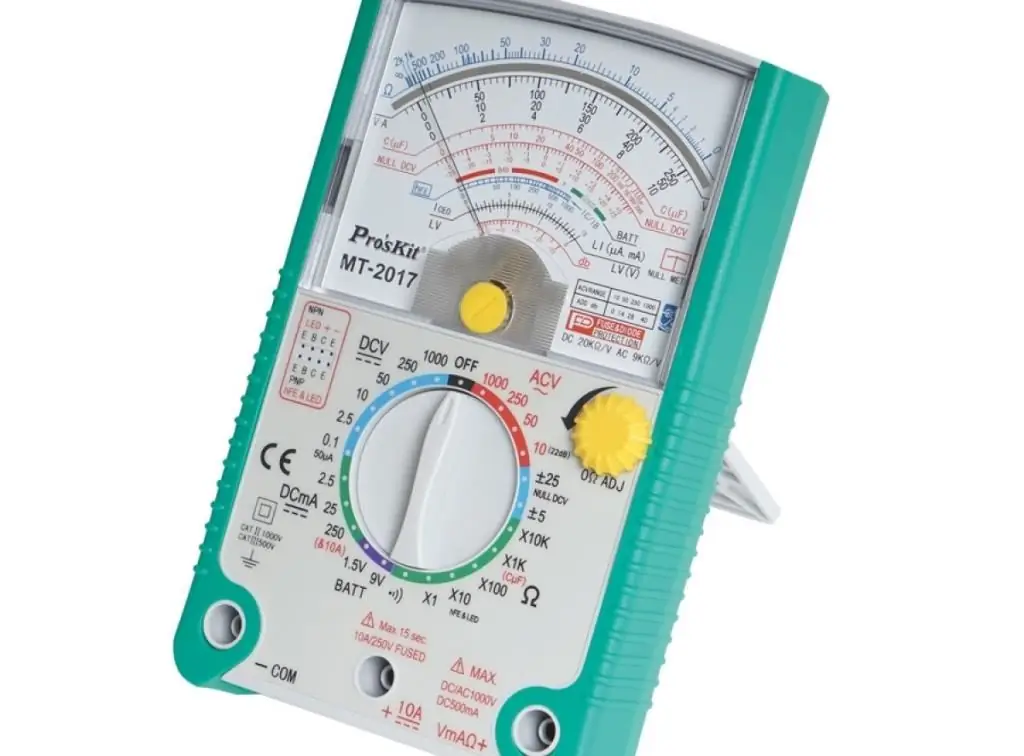
How to check the LEDs in the tape? Step by step instructions
Recently, the illumination of two-level ceilings or furniture has become quite common. And it's rather unpleasant when part of the surface or the entire tape goes out. In this case, you should act in stages.
As always, you should start with the simplest. And only then move on to more complex ones. The first thing to check is the voltage output from the power supply. To do this, the PSU is connected to the network, the switch of the tester is set to the appropriate constant voltage. Measurements are taken between the positive and negative terminals. Next, you need to check all the wires for integrity. To do this, use the short circuit mode, in which a wire break is easiest to find. By touching the probes to the two sides of the core, you can hear a beep, which indicates that there is no break. Otherwise, the wire will have to be replaced. If everything is in order here, you can proceed to checking the LEDs with a multimeter without desoldering them from the tape.
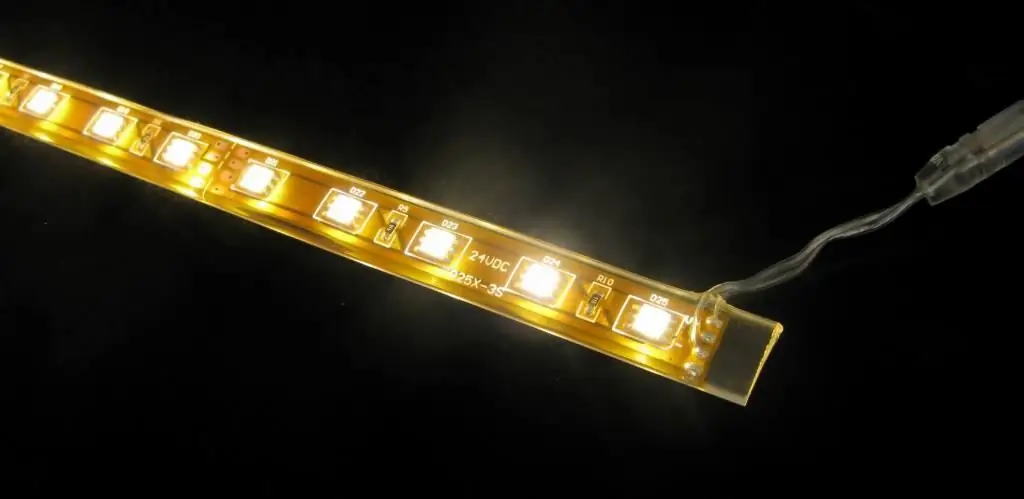
The switch remains in the same mode. Each LED needs to be tested.touching the red probe to the plus side, and the black probe to the minus side. The work item should light up. However, it happens that this does not happen. In this case, you will have to look at the screen and remember the data that appears on it. A polarity reversal check is required - it will show a breakdown (the readings will be the same in both directions). On a faulty SMD component, they will differ significantly. After going through all the elements and finding the faulty ones, they are soldered, changing to new ones. After that, the test of SMD LEDs with a multimeter can be considered completed.
What should I do if the tape is coated with silicone?
In this case, it is necessary to modify the probes a little. For this you will need:
- two regular needles;
- duct tape.
We apply the needles to the probes so that they are in contact with the metal. Then you just need to secure them with electrical tape. Now it will be quite easy to pierce the silicone in the right places.
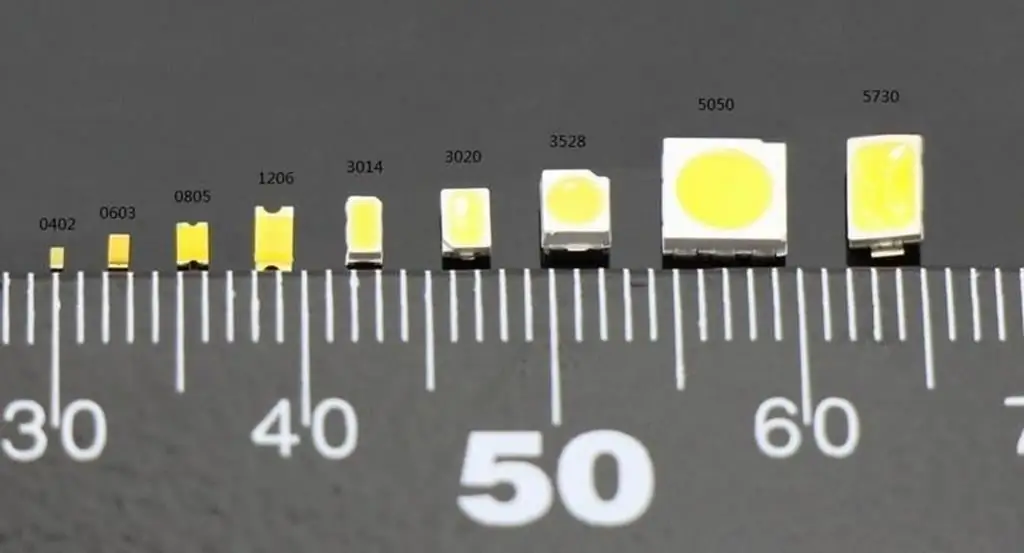
Features of ordinary elements
Simple LEDs with legs are also easy to check. The only question that a novice master has is how to determine the anode and cathode. If they were not “bitten off”, then the longer leg is the anode, to which the red probe should be attached. Accordingly, a black probe is switched to the short (cathode). Provided that the size of the legs is the same, the connection is made in random order. With proper switching, the element will light up. However, it doesn't always work out as intended. Here, too, there may bea situation where, when checking the LEDs with a multimeter, they do not glow. In this case, the numbers on the screen should be as follows:
- correct probe connection - 100-800;
- reverse - no more than 1.
If the indicators do not change when changing the polarity, then the LED is faulty. At one, it is completely closed, at 100-800 it is broken. It remains to simply throw away such an element. More on this in the next video.
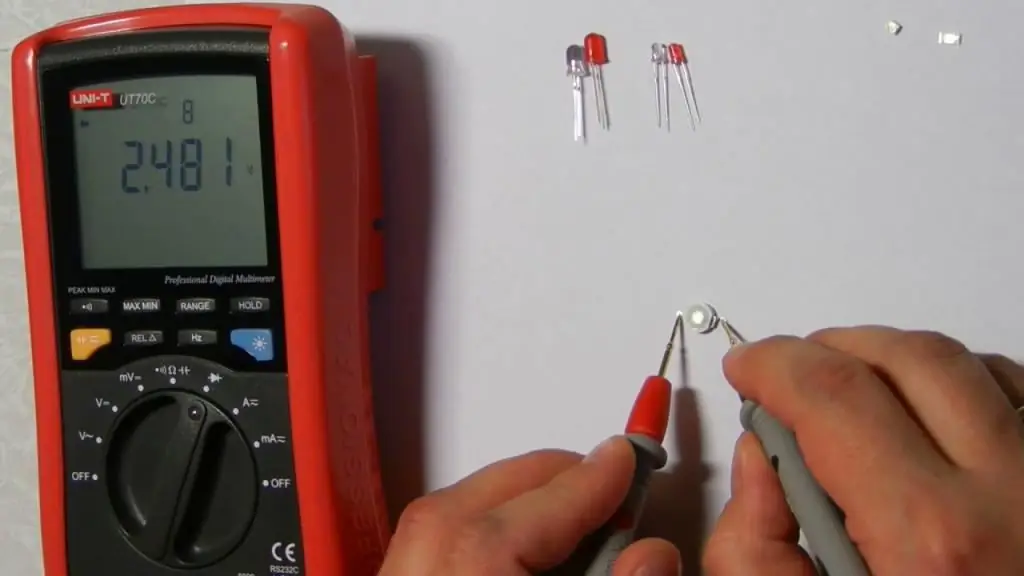
Additional functions of digital testers
Checking LEDs with a multimeter can be done in another way, without using probes. But this is only available if the device is equipped with a transistor test function. On a special (usually blue) round platform of such devices, there are holes that are divided into 2 parts - NPN and PNP. To test a conventional LED, you need to insert the legs into the NPN sockets in the following order: anode in C, cathode in E. If a PNP platform compartment is used, then the connection will be reversed.
Checking LEDs with a multimeter without continuity function
If the tester switch is not in the required position, other methods can be used. With a 5V power supply and a resistance of 100 ohms, the circuit shown in the figure below is assembled. The switch of the device is set to constant voltage. Here, if the LED is OK, a glow will appear.
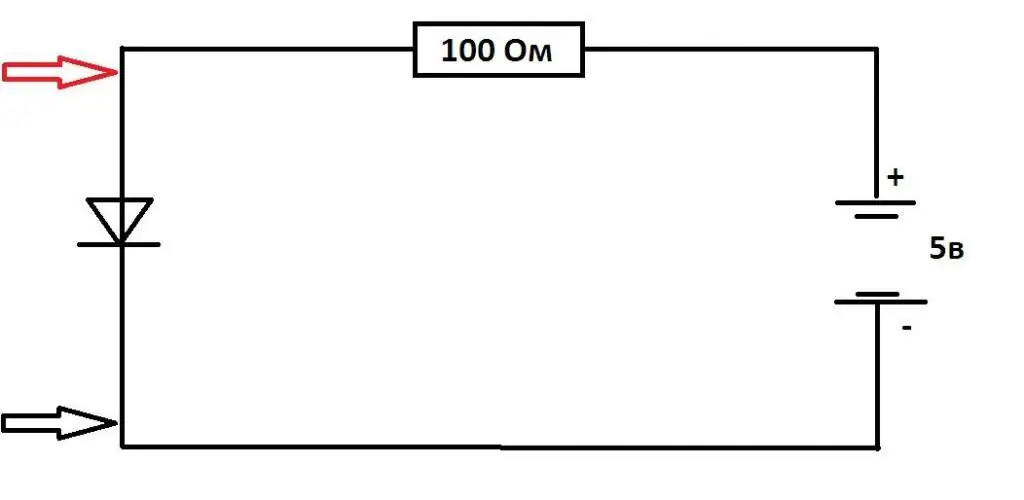
You can also use the ohmmeter mode. If the screen in bothpositions (when changing polarity) the same indicators, which means that it is faulty. Such a check will have to be performed if there is no digital device at hand or it has been produced for a long time. Modern devices, even the cheapest, are equipped with the necessary functions.
If it is necessary to test very powerful LEDs, such as a zener diode, use a 12V power supply or a 9V battery, such as Krona, as the power supply for the circuit indicated above.
Conclusion
Quite often, people who do not know how to test LEDs with a multimeter throw away a still usable tape, although only one chip needs to be replaced in it. This is pretty irrational. In addition, such work does not take much time, and the savings are quite sensitive. Which means it's worth doing. Moreover, such an activity does not require experience.






